Project Opel RAK. Experimental technology with rocket engines
One of the company's leaders, Fritz Adam Hermann von Opel, became the ideological inspirer of the Opel RAK project. It is interesting that after conducting the first tests of a new technology, the nickname “Rocket Fritz” was assigned to it. The project involved leading experts in the field of rocket technology. Max Valle and Friedrich Wilhelm Zander, who had a lot of experience in this business, took up the development of rocket engines. For the creation of "platforms" for rocket engines were responsible specialists from Opel.
In the spring of 1928, work on the Opel RAK project led to the construction of the first experimental vehicle, designated RAK.1. According to available data, later this name was given to other experimental devices of various types. The reasons for this are unknown. Probably, German engineers planned to use separate numbering for experimental equipment of various classes. So, starting from one, rocket cars, railroad cars and rocket aircraft were to be numbered. However, recording errors and errors cannot be ruled out. historical documents.
The RAK.1 rocket car was built on the basis of one of the Opel racing cars of the time. This car had a classic "racing" layout with a front engine, closed characteristic long hood, and a single cabin in the rear. The car body had smooth lines designed to reduce air resistance. The four-wheel chassis had steered front wheels and drive to the rear axle. For use in a pilot project, the race car was notably refined. With her removed the native gasoline engine and transmission units, as well as all other components required for the old power plant. At the same time, eight solid-fuel rocket engines were installed in the rear of the body.
On the Opel RAK.1 installed engines developed by M. Valle and F.V. Sander on the basis of special powder. Each such unit had a cylindrical body with a length of 80 cm and a diameter of 12,7 cm, into which the powder charge was placed. Valle and Zander developed two variants of the engine, differing from each other by a burden. The engine charge of the first version burned in 3 seconds, providing 180 kgf thrust, and the second burned for 30 s and gave 20 kgf thrust. It was assumed that more powerful engines will be used to accelerate the car, and the remaining ones will be turned on after them and will be able to maintain speed while driving.
The tests of the RAK.1 began in the spring of 1928. The first race on the test track ended in failure. The car accelerated only to 5 km / h and drove around 150 m, spewing a large amount of smoke. After some improvements, the rocket car was again able to get on the track and show higher performance. Nevertheless, the car RAK.1 had a relatively low power-to-hand ratio. Due to the insufficient total thrust of the engines and the large mass of the design, the car could not reach speeds of more than 75 km / h. This record was set 15 March 1928 of the year.
Due to the absence of other rocket engines with higher performance, German engineers were forced to take the path of increasing the number of engines on one machine. This is how the Opel RAK.2 rocket car appeared. Like the first car, it had a streamlined body with a rear cabin. An important feature of the RAK.2 is the rear wing. Two half-planes placed in the middle part of the body. It was assumed that due to the aerodynamic forces, these units will improve the grip of the wheels with the track and thereby improve a number of characteristics. At the rear of the machine was a bag of 24 powder engines with different types of stresses.

Build Opel RAK.2 did not take long. Tests of this car began in the middle of May 28. The 23 in May, a jet car with Fritz von Opel in the cockpit, was able to reach speeds of 230 km / h. In this test race, the entire set of 24 rocket engines was used. It was after this that von Opel got his nickname Rocket Fritz.
In parallel with the development of ground vehicles with rocket engines, Opel, Valle, Zander and other German specialists worked on other options for the use of jet thrust. So, in early June 1928, the construction of a glider equipped with rocket engines was completed. In various sources, this aircraft is designated as Opel RAK.1 and Opel RAK.3. In addition, sometimes it is called simply a rocket glider, without a special designation. The basis for the experimental apparatus was taken Ente glider ("Duck") designer Alexander Lippisha, built according to the scheme "duck". They installed a starter engine with a 360 kgf engine and 3 s operating time, as well as two cruising engines with a 20 kgf engine and 30 s operating time.
June 11 rocket glider RAK.1 first flew with the pilot Friedrich Stahmer in the cockpit. To launch the aircraft used a special rail. In this case, the take-off should be carried out only with the help of an existing powder engine. Third-party assistance from a tugboat or ground crew was not required. During the first test, the pilot successfully lifted the glider into the air. Already in flight, F. Stamer consistently switched on two sustainer engines. In 70 seconds, the RAK.1 flew around 1500 meters.
The second test flight did not take place due to an accident. During the take-off, the launch rocket engine exploded and set fire to the wooden structure of the airframe. F. Shtamer managed to get out of the aircraft, which soon completely burned out. It was decided not to build a new rocket glider and not to continue testing.
The following two experiments were carried out using railway platforms. In the summer of 1928, two missile railcars were built at Opel, during the tests of which certain success was achieved.
June 23 on the Hannover-Celle railway line took two test runs of the Opel RAK.3. This unit was a lightweight four-wheel platform, in the back of which there was a driver's cabin and a set of rocket engines. The car was not equipped with a steering mechanism, and the cabin had the smallest possible size, limited only by the convenience of landing the driver. In addition, the missile trolley received lightweight wheels.
Testing machines were announced in advance, because of which a large number of spectators gathered along the tracks. For the first passage, a missile railcar was equipped with ten engines. Under the control of the tester, the car has developed high speed: figures from 254 to 290 km / h are mentioned in various sources. Despite such a difference in data, we can safely assume that the Opel RAK.3 missile railcar was one of the fastest vehicles in the world.
Immediately after the first race, it was decided to hold the second. This time, project managers ordered the installation of a 24 rocket engine on a rail. It is worth paying tribute to von Opel and his colleagues: they understood the risk, so the car had to leave for the second race without a driver. Such precaution has fully justified itself. The 24 engines turned out to be too big for a lightweight car, which caused it to quickly pick up high speed and fly off the tracks. The first version of the missile railcar was completely broken and could not be restored.
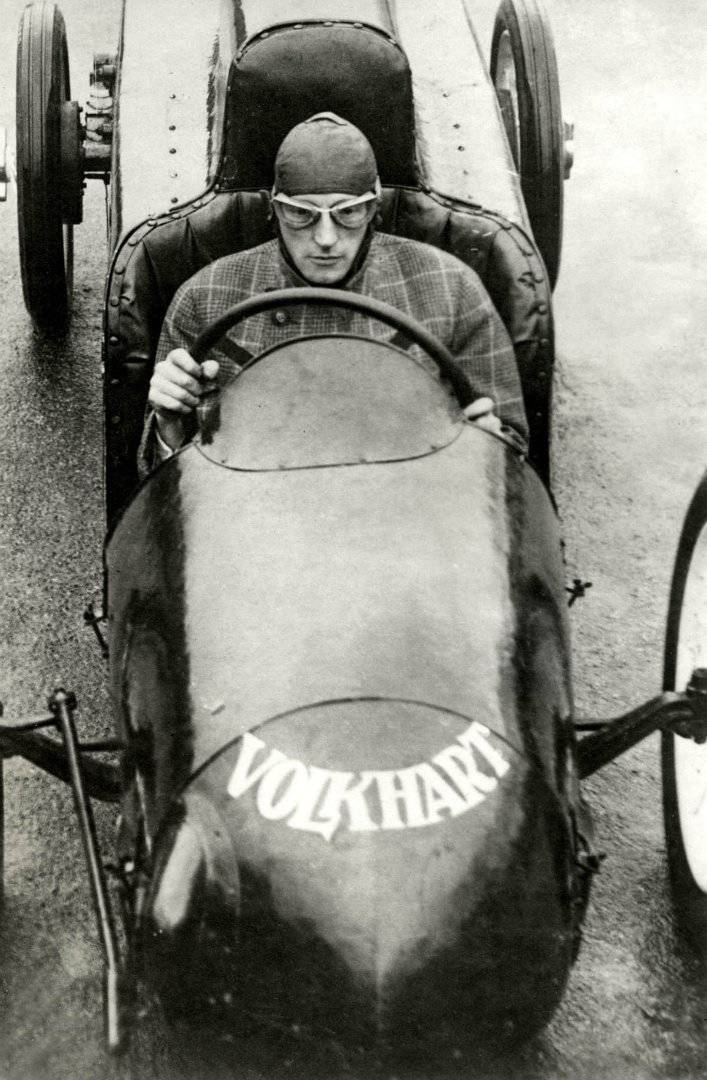
In the summer of 1928, another missile railcar was built, designated RAK.4. By design, this car was little different from its predecessor. It was not only the design that was similar, but also the fate of two cars. Trolley, equipped with a set of rocket engines, could not even perform a single test race. During the first tests, one of the engines exploded and provoked an explosion of the rest. The handcar pulled off, it drove a little along the rails and flew off to the side. The car was destroyed. After this incident, the leadership of the German Railways forbade testing of similar equipment on existing lines. Due to the lack of own ways, Opel was forced to terminate the railway part of the RAK project.
Until the beginning of autumn 1929, the German specialists were engaged in various projects, including promising jet technology. However, no tests of the finished samples were carried out. In September, 29 F. von Opel, A. Lippish, M. Valle, F.V. Zander and their colleagues completed the construction of a glider with rocket engines, which received the designation Opel RAK.1. It should be noted that there is a certain confusion with the names of the reactive airframes, due to the lack of reliable information about the designation of the first unit, which flew in 1928 year.
A new airframe designed by A. Lippish received 16 rocket engines with 23 kgf each. For takeoff, a special 20-meter design was intended. 30 September 1929 was the first and last flight of the RAK.1 glider, which was controlled by the Fritz Rocket itself. Takeoff and flight were successful. The power of the series-switched engines was enough to accelerate, rise into the air and the subsequent flight lasting several minutes. However, the landing ended in an accident. The weight of the structure with the pilot exceeded 270 kg, and the recommended landing speed was 160 km / h. Fritz von Opel lost control and the glider was seriously damaged.
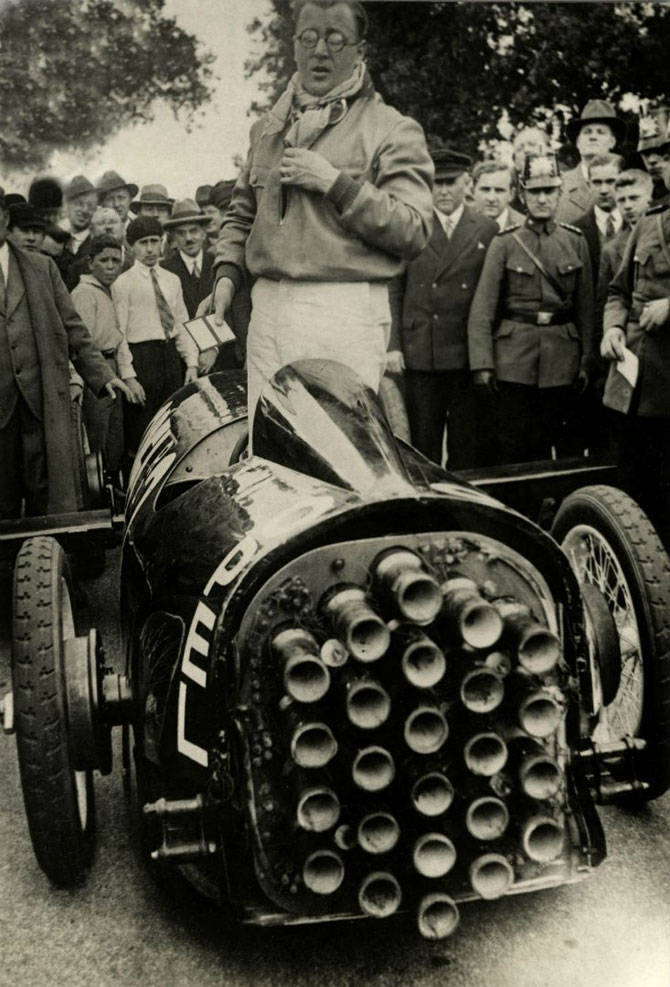
Shortly after the emergency landing of the Opel RAK.1 glider, a special letter came from the USA to Germany. The main shareholder of Opel at that time was the American company General Motors, whose management was concerned about several unsuccessful tests of experimental rocket technology. Not wanting to jeopardize personnel, GM’s managers banned German specialists from engaging in rocket-related topics. An additional prerequisite for this ban was the economic crisis, which did not allow spending money on dubious experimental projects.
After this order M. Valle, F.V. Zander and other specialists continued their research, and F. von Opel soon left his firm. In 1930, he moved to Switzerland, and after the start of World War II, he left for the United States. Despite his nickname, Rocket Fritz was no longer involved in jet-powered vehicles.
The project Opel RAK is of great interest from a technical and historical point of view. He clearly showed that in the late twenties, the development of technology made it possible to build equipment with unusual engines. However, all the machines built were nothing more than technology demonstrators. It is not difficult to guess that a rocket car and a rocket car can hardly find its place on the highways and railways. An aircraft with a rocket engine turned out to be much more viable. In the second half of the thirties, A. Lippish began developing the aircraft, which was later called Me-163 Komet. This machine with a liquid propellant rocket engine became the first mass-produced rocket glider, and was also limitedly used in the Luftwaffe. However, airplanes with rocket engines were not widely used either, most of these developments remained purely experimental technique, which did not find application in practice.
On the materials of the sites:
http://astronautix.com/
http://strangevehicles.greyfalcon.us/
http://speyer.technik-museum.de/
http://fresher.ru/
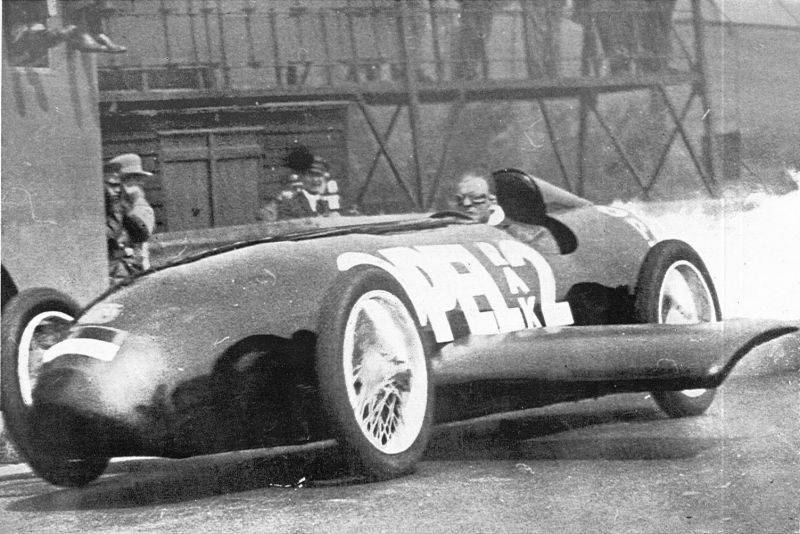
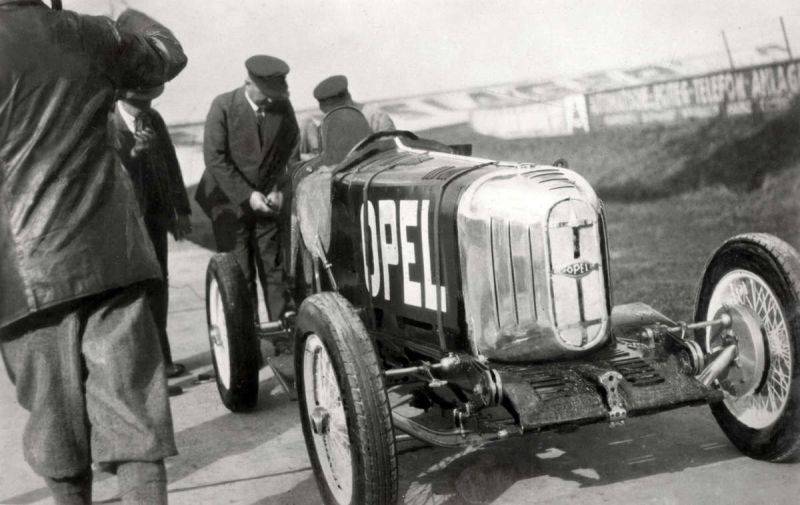
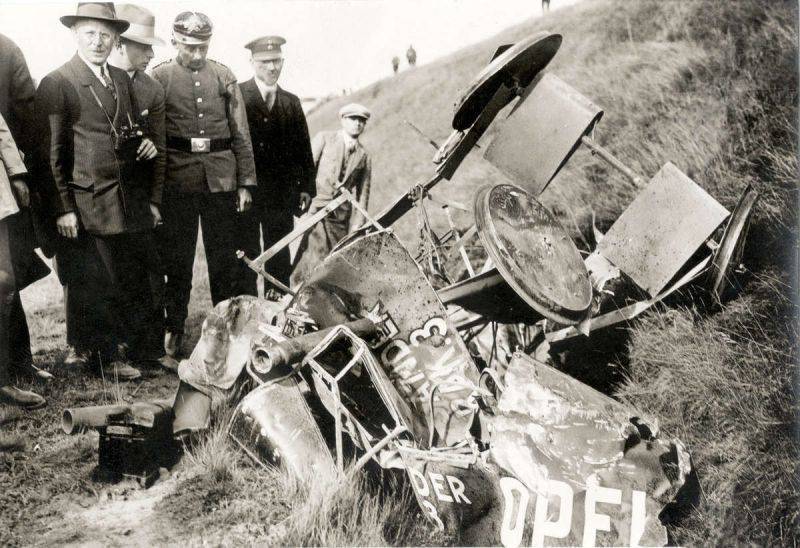
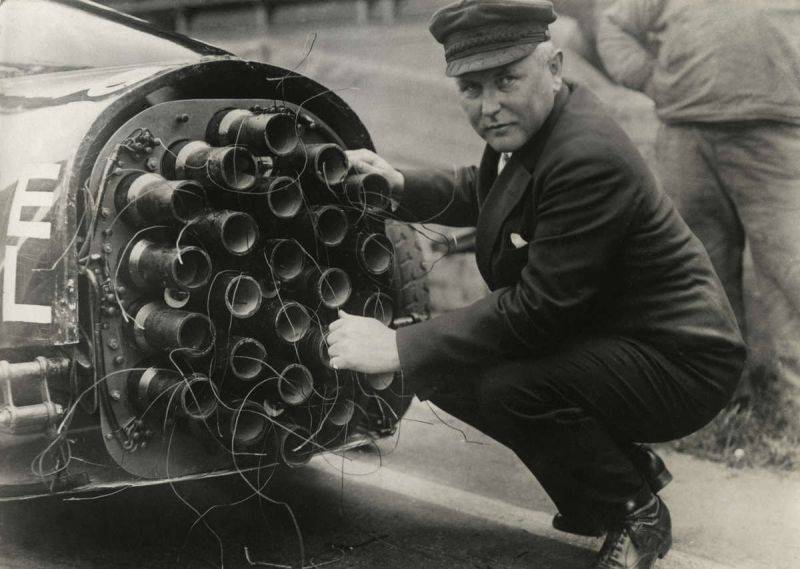
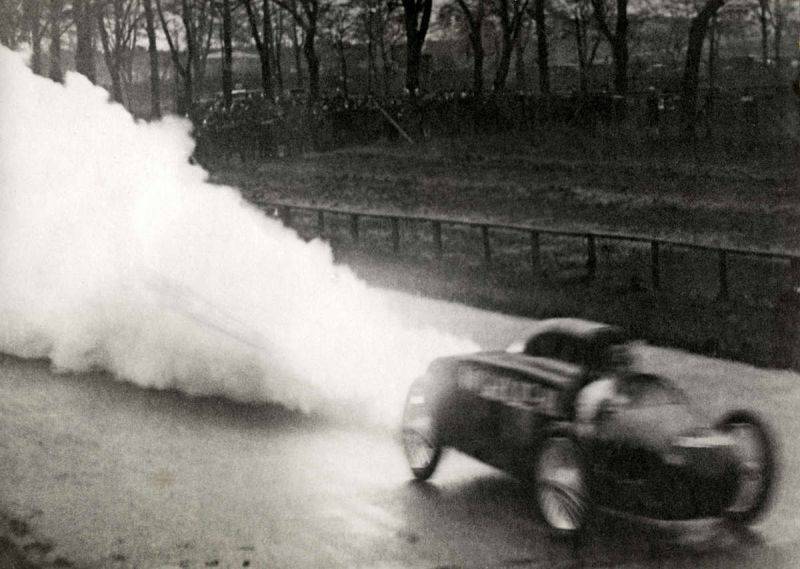
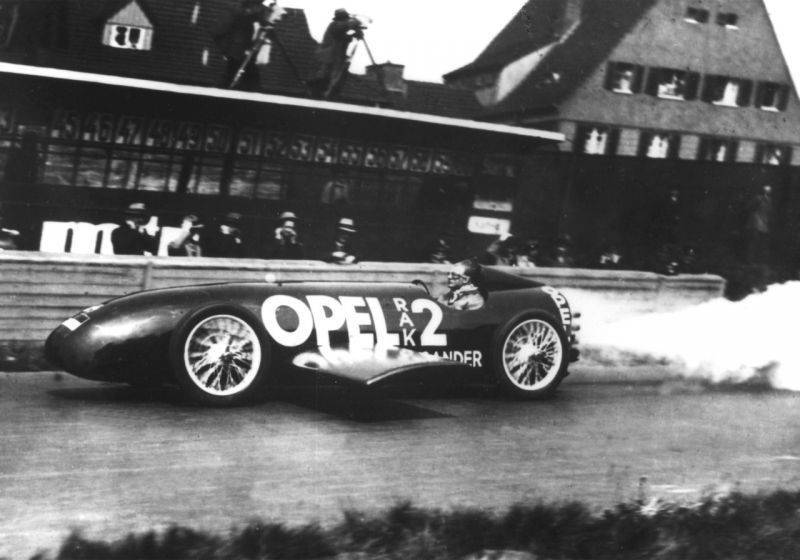
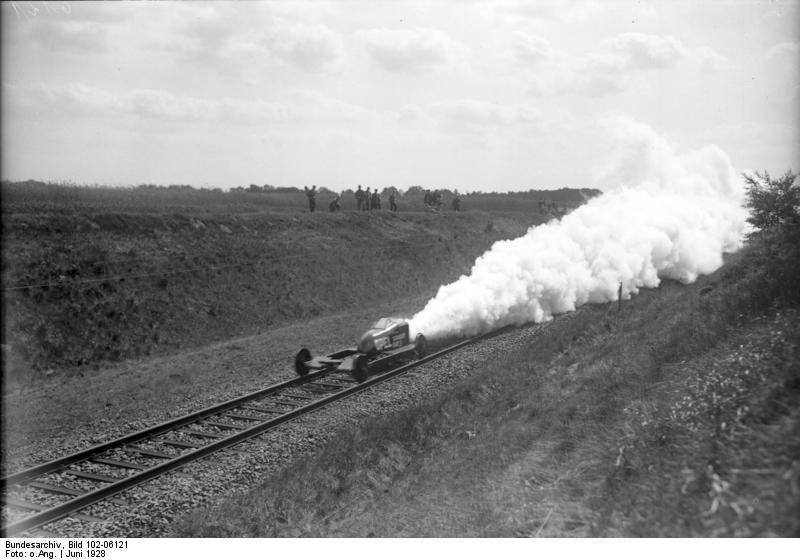
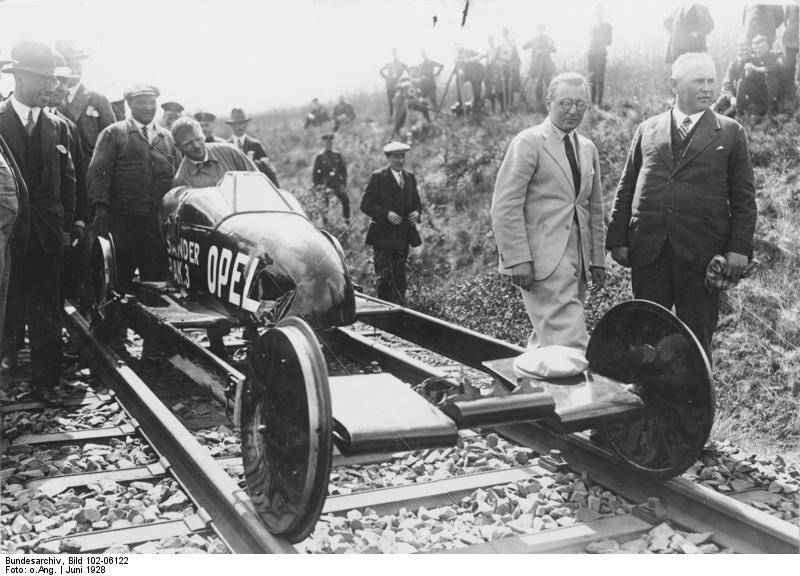
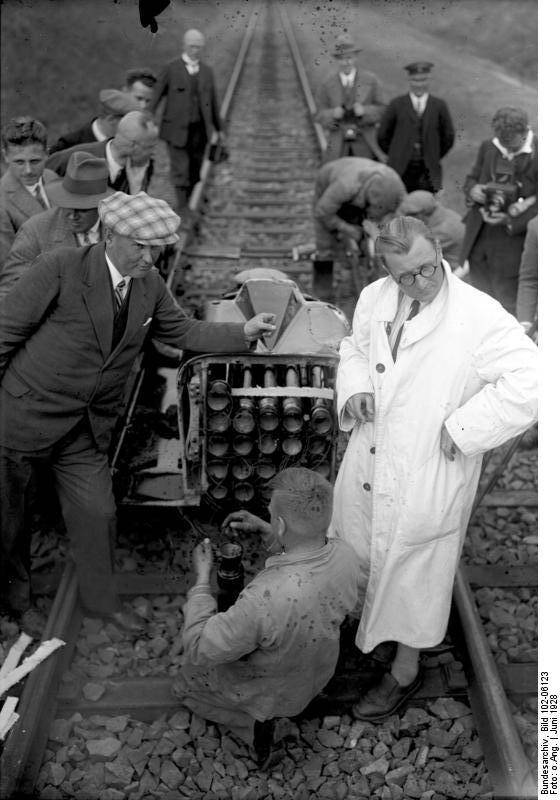
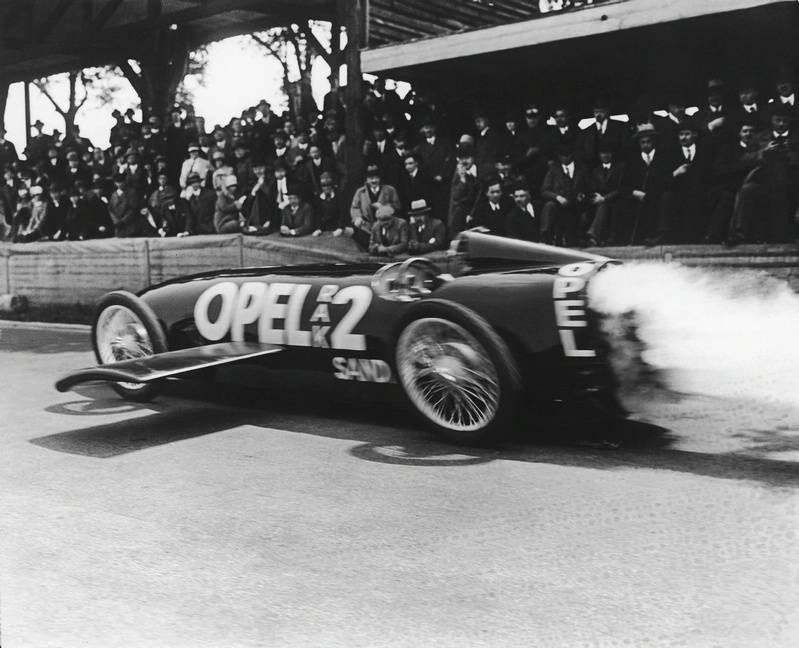
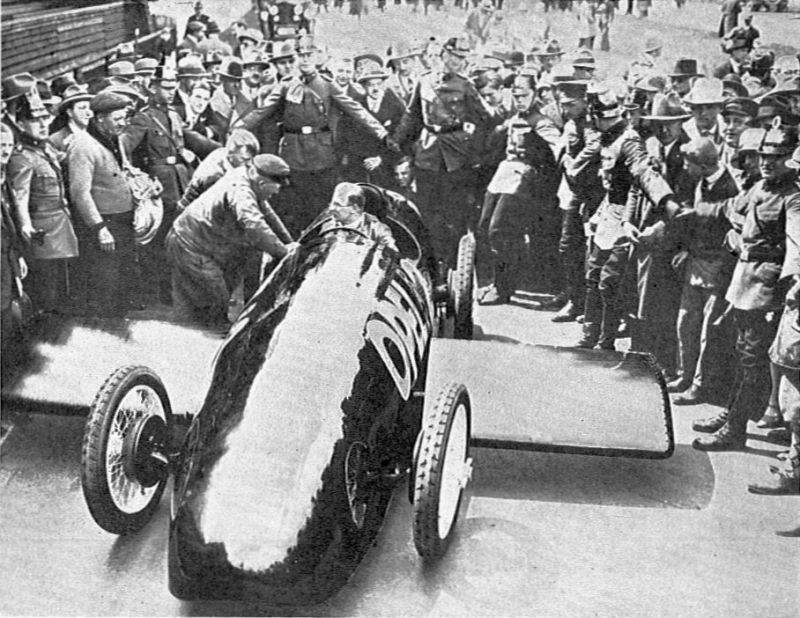
Information